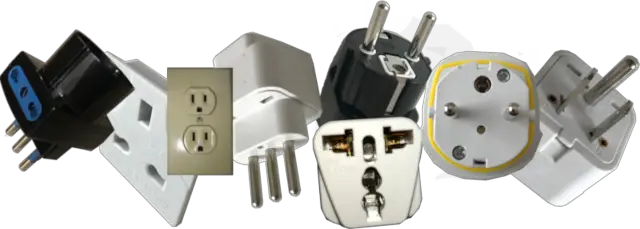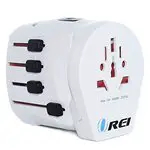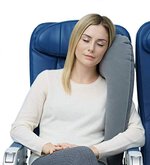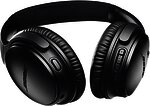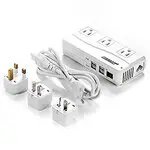How to use plugs from Papua New Guinea in Cuba
Plugs, sockets, adapters and other information needed for travelling from Papua New Guinea to Cuba in this page. If you want a report for other countries, re-start the wizard to find to electric adapters for your trip here.
Quick Chart at-a-glance
| Papua New Guinea | Cuba | ||
|---|---|---|---|
| Voltage: | 240V. | 110V. |
|
| Plugs Type: | I. | A, B, C, L. |
|
| Hertz: | 50Hz. | 60Hz. |
|
If you are electrical savvy, perhaps the previous chart is all you need. If this is not the case, you can continue reading and discover what the chart is saying!
Plugs and Sockets at each country
In Papua New Guinea the following plugs are used: (includes Port Moresby, Lae, Madang, Alotau, Kavieng, Kokopo, Goroka.)

|
| Plug Type I |

|
| Outlet Type I |
... and in Cuba you will use: (includes Havana, Santiago, Cienfuegos, Holguín, Varadero, Camagüey.)
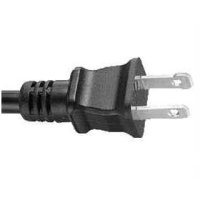
|
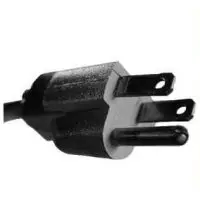
|

|
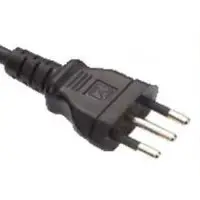
|
| Plug Type A | Plug Type B | Plug Type C | Plug Type L |

|
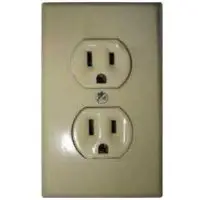
|

|
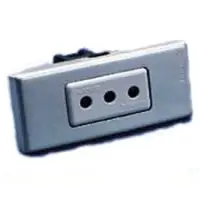
|
| Outlet Type A | Outlet Type B | Outlet Type C | Outlet Type L |
Considerations for the Cuba
We have been informed about new buildings in Cuba using 220V instead of 110V. We could not verify this information enough in order to update our database. Nevertheless, please do exercise special care as connecting a 110V device into a 220V outlet will very likely destroy the electric-device and it is dangerous.
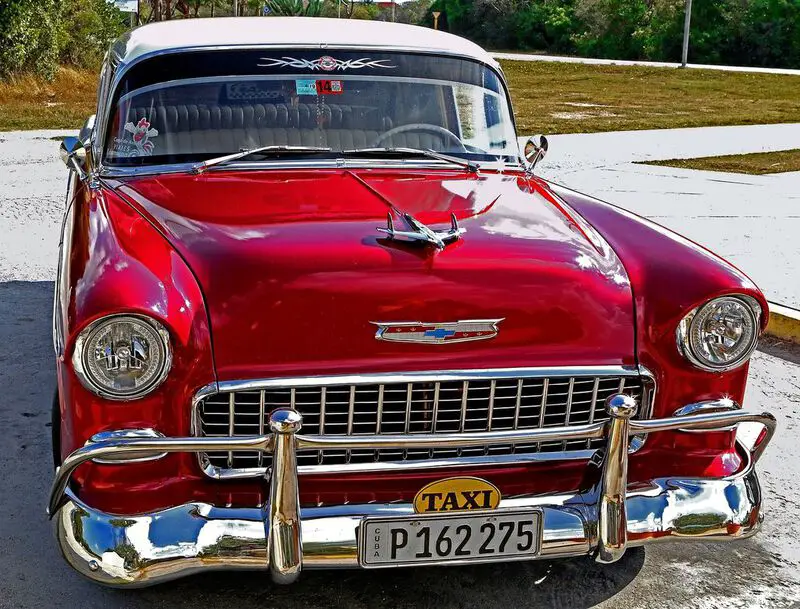
Cuban Classic
Voltage
Take care: Cuba uses lower voltage than Papua New Guinea
Your electric devices from Papua New Guinea will be expecting 240 Volts, but Cuba grid is of 110 Volts, this is a substantial difference that requires you to take some extra steps in preparation to your trip:
On the positive side, nowadays many devices will switch automatically to the network voltage and they will work just fine, i.e. mobile phone chargers are typically multi-voltage (but please, do actually check your own). It is important that you pay attention to your device's voltage. Connecting electronics to the wrong voltage, in the luckiest of the cases, the device will break or stop working temporarily; but please don't take this lightly, in the worst of the cases electrocution and fire hazards are a real possibility.

High-power devices don't usually handle different voltages due to the high-currents involved i.e. anything that its main purpose involves generating heat (or cold) like hair driers, baby bottle warmers, kettles, etc. On the contrary, modern low-power devices are likely to auto-detect and auto-adapt to different voltages i.e. usb chargers, laptop chargers, etc.
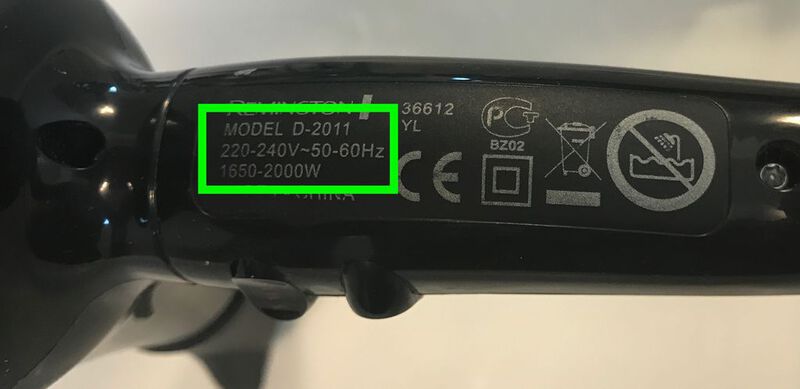
You will need a step down voltage converter a device that can be plugged to 110 volts and it provides an outlet with 240 volts for your Papua New Guinea' device. You will need to pay attention to the maximum power output of the converter and the maximum power consumption of the device.
Plugs Type
Different plug systems
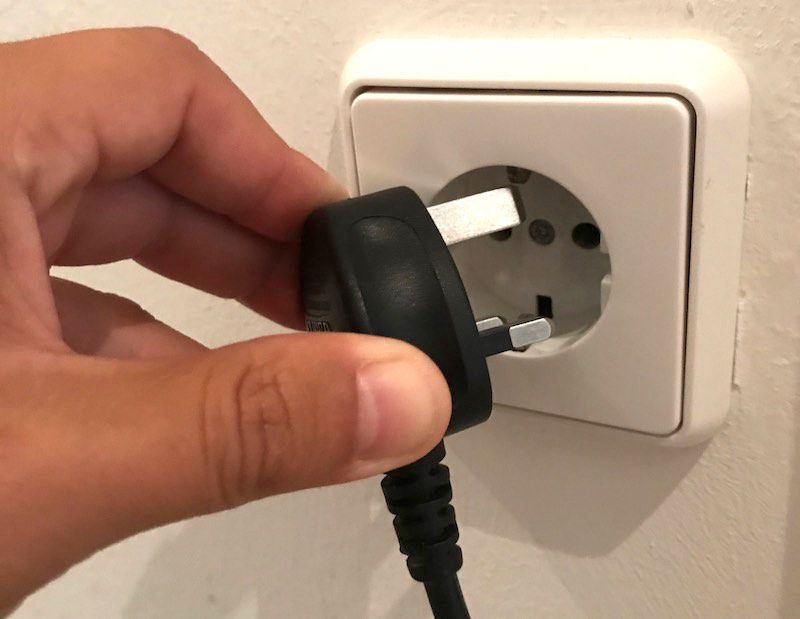
Sorry, none of the plugs used in both countries are common. You will definitelly need plug adapters, please continue reading for more information.
Adapters
Lists of adapters you can use in your travel:
Adapter: generic
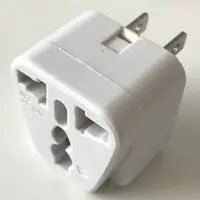
|
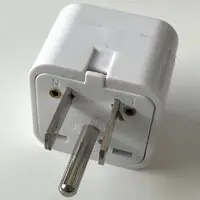
|
| Front | Back |
This adapter allows you to use plugs type: A, B, C, D, E, F, G, H, I, J, K, L, M, N into outlets type: B.
Adapter: generic
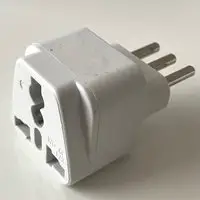
|
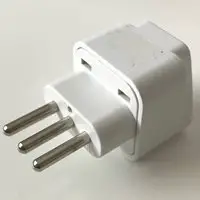
|
| Front | Back |
This adapter allows you to use plugs type: A, B, C, D, E, F, G, H, I, J, K, L, M, N into outlets type: L.
Adapter: generic
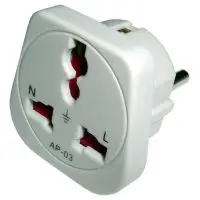
|
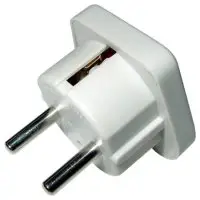
|
| Front | Back |
This adapter allows you to use plugs type: A, B, D, G, I, M into outlets type: C, E, F, L.
This adapter has a safety protection so you don't plug only one terminal into the adapter while touching the other with your finger, because it is generic, when you buy it pay attention to this safety mechanism. Overall a good adapter that has the earth connection pass-though (notice the metallic connector on the side.)
Adapters you can buy
You can buy the following multi-purpose adapters from Amazon. Please also take a look at the recommended gadgets for your trip.
Hertz
No equal Hertz
This is not a big issue. Unless you are using an electric alarm clock or some motors when speed is an issue. Explanation: Some alarm clocks uses the frequency of electricity network to measure time. So, time shifts could be experimented. Almost every home electronic device works perfectly with different Hertz.
Finally, by the way ...
We are revamping the blog! Visit our new blog here.
↬ a link from your website helps too.
